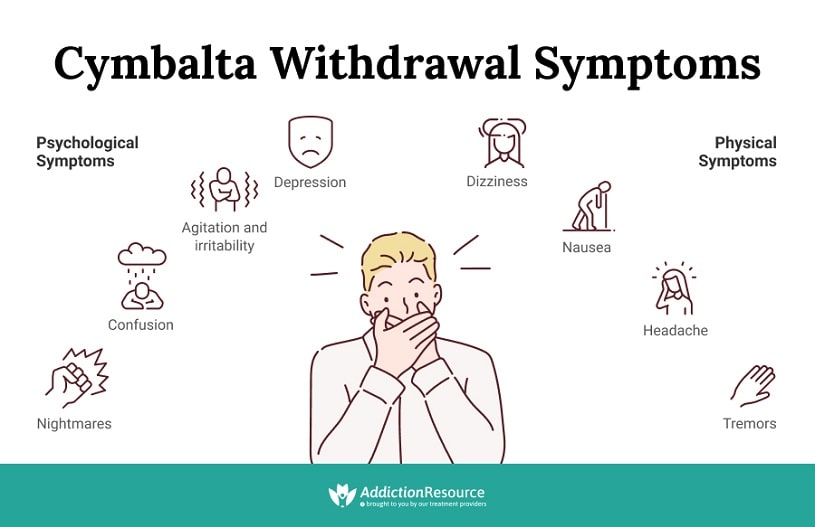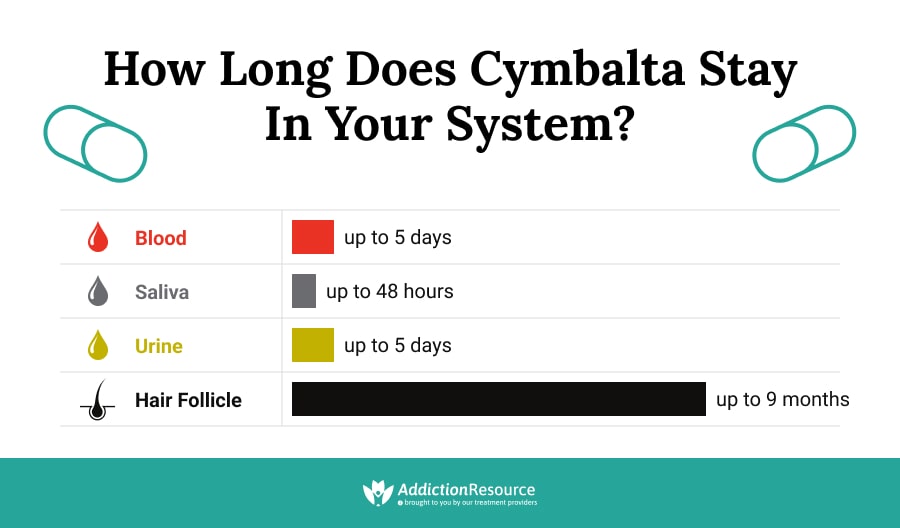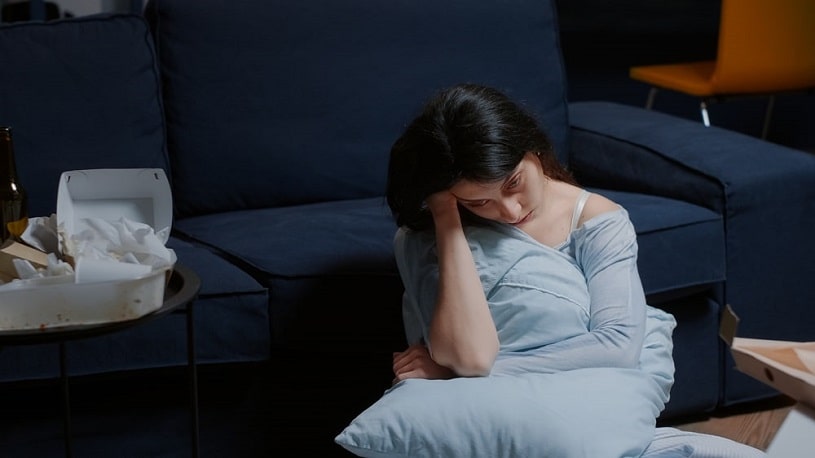Stopping Cymbalta could be quite challenging, especially if the patients do not know how to do it correctly. For weaning off Cymbalta successfully, it is vital to stick to the tapering schedule and never try to stop duloxetine abruptly because Duloxetine withdrawal can be tough.
Table Of Contents:
Although this antidepressant is not physically addictive, the withdrawal effects can be severe and even life-threatening. Knowing how to reduce and manage symptoms of withdrawal from Cymbalta can help a person complete the treatment successfully and avoid relapsing.
Cymbalta Withdrawal: The Causes Behind
Frequently, patients will choose to stop duloxetine for a combination of reasons. For example, Cymbalta can make patients gain weight in some cases, which can happen in addition to the medication no longer being effective. When patients reach the point that they are considering stopping duloxetine, they should speak to their doctor about their desire. Other adjustments may make the medication work for them. And should stopping be the best course of action, they can help the patient quit taking the medication safely.

Like other antidepressant drugs, Duloxetine is rarely associated with dependence and withdrawal by the majority of patients. However, stopping it abruptly often results in some adverse effects, both physical and psychological. The symptoms are caused by Duloxetine withdrawal syndrome, typically referred to as discontinuation syndrome.
Like most other antidepressants, duloxetine begins exerting therapeutic effects after it has built up in a person’s system. This scheme puts the body through tremendous stress when the dose is suddenly changed, resulting in severe withdrawal symptoms.
A study reports that Cymbalta withdrawal symptoms last for weeks and even months in some patients. It is also noted that as many as 44% of patients taking Duloxetine experience some effects of discontinuation syndrome.
Cymbalta Withdrawal Symptoms
Withdrawal from Cymbalta can be both moderate and severe. The symptoms often manifest as amplified side effects of taking Duloxetine. It is barely possible to compile a comprehensive Cymbalta withdrawal symptoms list since they differ from person to person; however, medical professionals can distinguish the following most frequently reported effects.

The Full List of Psychological Symptoms:
- Depression
- Anxiety
- Agitation and irritability
- Racing thoughts
- Confusion
- Nightmares
- Hallucinations
- Paranoia, hypomania, and other mental disorders
- Persistent suicidal thoughts or self-harming behaviors
The Full List of Physical Symptoms:
- Dizziness
- Nausea
- Headache
- Tremors
- Vomiting
- Insomnia
- Diarrhea
- Excessive sweating
- Irregular heartbeat
- Seizures
- Hypersensitivity
Another hazard of the symptoms mentioned above is their potential for causing other more severe health issues. For instance, if a person feels depressed after quitting the medication, they might take a large dose to alleviate the disturbing feelings. It might lead to duloxetine overdose and other health problems.
Brain Zaps
Brain zaps on Duloxetine are a common but not fully explained phenomenon. Patients describe the zaps as sudden electrical buzzing in their head. Sometimes the sensations extend to other parts of the body. Brain zaps caused by quitting the medication are often accompanied by disorientation and lightheadedness. While significantly disturbing to many, brain zaps are not known to present any health danger to the person.
Duloxetine Withdrawal Timeline
People who experience the discontinuation syndrome often wonder how long Cymbalta withdrawal lasts. The process can be quite lengthy depending on the dose of the drug, how long a person has been receiving treatment, and other individual characteristics. Overall, the process of detoxification and withdrawal can take up to several months.
The First Symptoms
The first Duloxetine withdrawal symptoms appear after about 12 hours after an individual ingested the last dose. At that time, approximately half the consumed amount remains in the person’s system, so the effects are likely to be minor.
After 24 Hours
After 24 hours since the ingestion, the person might begin experiencing nausea, sweating, agitation, and other symptoms.

The Subsequent Weeks
The physical side effects of duloxetine usually peak after 2-3 days and can persist for more than a week. The psychological symptoms of stopping duloxetine can last for months. Although they slowly fade with time, great emotional disturbance can trigger the return of depression, anxiety, or any other mental health disorder that the antidepressant was intended to treat. The period when patients get off duloxetine is also characterized by an increased risk of suicide.
There Is No Universal Timeline
The severity of withdrawal from Cymbalta and how long it takes to stop experiencing the symptoms depends on every patient’s characteristics. It is difficult to predict each person’s response to the discontinuation of duloxetine. Therefore, medical supervision is strongly advised to help the patient quit duloxetine without damaging their health along the way.
How Long Does Cymbalta Stay in Your System?
Cymbalta half-life averages 12 hours. However, it can happen sooner or take longer to occur, depending on the patient. It means that Duloxetine withdrawal can start approximately 12 hours after taking the last dose of the drug. Knowing the duloxetine half-life is important, but it doesn’t show the big picture.
The Exact Length of Time of How Long Cymbalta Stays Detectable In the System Is Discussed Below:
- Blood. When it comes to detection in the blood, duloxetine can be seen on tests for up to five days after the last dose.
- Urine. In the urine, it also shows up for about five days.
- Saliva. Saliva has the shortest detection period of just two days after the last dose.
- Hair. On the other hand, hair has the longest detection time, which is possible up to nine months after last use.

Because duloxetine can remain in the system for so long, it can take a while for the body to return to normal. For example, duloxetine sexual side effects may not go away for several weeks. And since one cannot take Cymbalta while pregnant, this can also determine when it is safe to conceive.
Stopping Duloxetine Requires Medical Supervision
Many patients believe that they can get off the antidepressant on their own. However, stopping any antidepressant has the risk of health complications arising. Additionally, if a user switches medications without medical assistance, there are risks of complications. It also refers to a situation when a patient stops using duloxetine in combination with other drugs such as Cymbalta with Wellbutrin.
Doctors have proper knowledge on weaning off Cymbalta successfully. With the right help, users can get off the drug without problems.
How To Stop Cymbalta?
Stopping duloxetine can technically be done one of two ways: going cold turkey or tapering off the drug. However, only one method to stop taking Duloxetine is safe, and that is tapering. Going cold turkey will trigger withdrawal, which is something the user will want to avoid as it has the potential to be deadly.
Quitting Cold Turkey
Knowing that stopping Cymbalta cold turkey is dangerous, it might seem odd that people would consider this method. However, it is not always by choice. When people lose their insurance or cannot afford the next month of pills, there is a possibility they will not have another option.
However, not having other options does not mean stopping Cymbalta cold turkey will be without consequences. On the mild end, the user will experience mild Cymbalta withdrawal from quitting cold turkey. On the dangerous end, stopping Cymbalta suddenly can trigger seizures, suicidal thoughts and could even put the patient into a coma.

If someone is in a position where they feel they have no choice but to go cold turkey, they should contact their doctor to see if there is the help they can offer them to stop using it safely.
Tapering Off
Tapering off Cymbalta, or weaning off the drug, is the safe way to stop use. However, it should be done under medical supervision. There are correct and incorrect ways to taper, and following the proper taper schedule for the patient is critical to success. For some patients, it takes a few weeks to taper off, while others need months.
A Typical Schedule for How to Taper off Cymbalta Is as Follows:
- Starting dose – 90 mg
- First Taper – 60 mg
- Second Taper – 30 mg
- Third Taper – 20 mg
- Fourth Taper – 10 mg
However, users should not simply follow this schedule. If they start at a higher dose or have been abusing the drug, a different plan is needed. Additionally, there could be other complicating factors that necessitate altering the schedule. Always taper off with the help of a doctor.
Are There FDA Guidelines On Stopping Cymbalta?
The FDA does not have any guidelines for how to come off Duloxetine safely. It is unfortunate, as it means that there is not much research into weaning off Cymbalta successfully, and most doctors are working without the correct guidance. All the FDA suggests is that stopping be gradual and monitored by a doctor.
Duloxetine Withdrawal Treatment
When it comes to Cymbalta withdrawal, help is available to enable people to overcome their dependence on the medication and ease the side effects. Even with tapering, there is no guarantee that withdrawal symptoms will be avoided entirely. Therefore, some patients will need treatment for these symptoms. Certain antidepressant drugs like Prozac might be used once to counter the psychological side effects of quitting duloxetine. Other medications might also be used to treat diarrhea, nausea, and insomnia.
The necessity to manage Cymbalta withdrawal extends well beyond the initial detox period. Various supportive and treatment services are available to help patients who suffer from psychological dependence on duloxetine or go through a relapse.
Getting Help With Stopping Cymbalta
Withdrawal symptoms of Duloxetine can include severe deterioration of a person’s mental state, relapse of depression or anxiety, panic attacks, and an increased risk of suicide. The adverse effects might occur due to discontinuation syndrome or during detox for those who are addicted to the drug.
Whether someone wants to stop Cymbalta because they are abusing it or has another reason for quitting, they must do it carefully. Doctor supervision is critical, and for some, it will need to be in a drug rehabilitation facility.
Experts can help users safely stop the drug and find coping mechanisms for staying clean and healthy. The treatment programs are often individual to ensure a long-lasting recovery.
Hope Without Commitment
Find the best treatment options. Call our free and confidential helpline
Most private insurances accepted
Page Sources
- Perahia, D. G., Kajdasz, D. K., Desaiah, D., & Haddad, P. M. (2005). Symptoms following abrupt discontinuation of duloxetine treatment in patients with major depressive disorder. Journal of affective disorders, 89(1-3), 207-212. https://pubmed.ncbi.nlm.nih.gov/16266753/
- Harvard Health Publishing, How to taper off your antidepressant, 2020. https://www.health.harvard.edu/diseases-and-conditions/how-to-taper-off-your-antidepressant
- US National Library of Medicine, MedlinePlus, Duloxetine. https://medlineplus.gov/druginfo/meds/a604030.html
- Stockmann, T., Odegbaro, D., Timimi, S., & Moncrieff, J. (2018). SSRI and SNRI withdrawal symptoms reported on an internet forum. International Journal of Risk & Safety in Medicine, 29(3-4), 175-180. https://pubmed.ncbi.nlm.nih.gov/29758951/
- Fava, G. A., Benasi, G., Lucente, M., Offidani, E., Cosci, F., & Guidi, J. (2018). Withdrawal symptoms after serotonin-noradrenaline reuptake inhibitor discontinuation: systematic review. Psychotherapy and psychosomatics, 87(4), 195-203. https://pubmed.ncbi.nlm.nih.gov/30016772/
- Qadir, A., & Haider, N. (2006). Duloxetine withdrawal seizure. Psychiatry (Edgmont), 3(9), 10. https://www.ncbi.nlm.nih.gov/pmc/articles/PMC2963463/
- Henssler, J., Heinz, A., Brandt, L., & Bschor, T. (2019). Antidepressant withdrawal and rebound phenomena. Deutsches Ärzteblatt International, 116(20), 355. https://www.ncbi.nlm.nih.gov/pmc/articles/PMC6637660/
- Perahia, D. G., Kajdasz, D. K., Desaiah, D., & Haddad, P. M. (2005). Symptoms following abrupt discontinuation of duloxetine treatment in patients with major depressive disorder. Journal of affective disorders, 89(1-3), 207-212. https://pubmed.ncbi.nlm.nih.gov/16266753/
- Wilson, E., & Lader, M. (2015). A review of the management of antidepressant discontinuation symptoms. Therapeutic advances in psychopharmacology, 5(6), 357-368. https://www.ncbi.nlm.nih.gov/pmc/articles/PMC4722507/

 Authored by
Authored by  Reviewed by
Reviewed by 